Australia fires: The farmers burying their own cattle
- Published
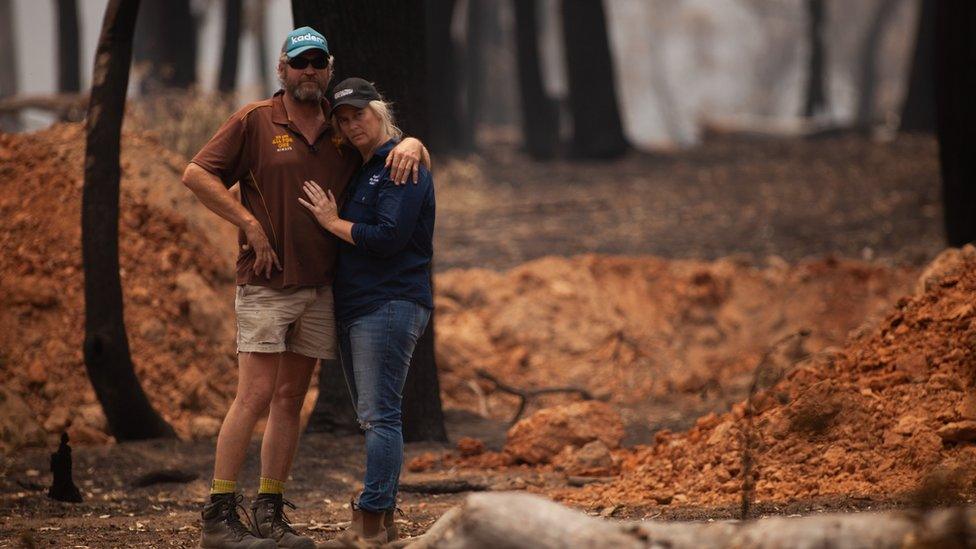
Travis and Belinda Attree came back to a scorched property after the fire
Belinda Attree walks towards a ditch in a paddock that has been blackened by Australia's massive bushfires.
"We'll get as close as we can without probably getting a bit sick," she says.
In the ditch - now a grave - are 20 dead cattle and a kangaroo. All were badly burned when the fire swept through Corryong, about half-way between Melbourne and Sydney.
Warning: Some may find the following pictures of dead animals distressing
Belinda, her husband Travis, and their children made a terrifying last-minute escape as the fire swung around unexpectedly and roared through their property.
But when they returned after the fire-front had passed, they found 11 dead cows, and others that were too injured to keep.
"It destroys you, mate, to shoot your own cattle," Travis says. "I take pride in my cattle, to have them in good condition. And to do this, it's just not right."
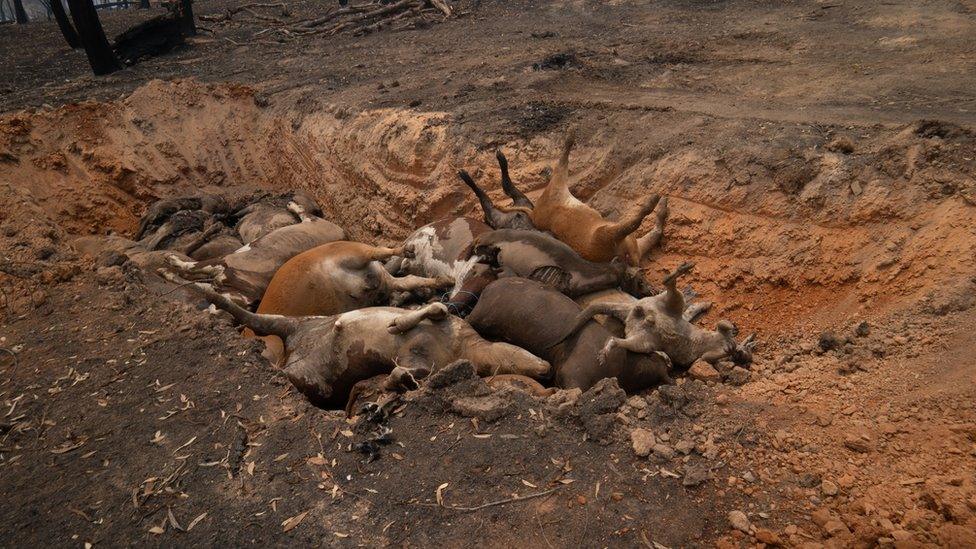
Agriculture Minister Bridget McKenzie estimates 100,000 cattle and sheep will be lost in this season's fires
Travis Attree has put down cows before. It's an unpleasant reality of farming. But he has never faced anything like this.
He tears up a bit. They've lost lots of other things too: all their hay, the hay shed, another shed full of football memorabilia, two boats, and an all-terrain vehicle.
But losing animals hurts the most. When asked why he hasn't covered the animals' grave, the answer is simple.
"My neighbour hasn't found all of his," he says. "There could be more to go in there yet."
Belinda recorded a video as they returned to the property. In it, she tearfully follows their injured herd through the choking haze, knowing they won't have any choice but to euthanise many of the stock.
"They must have just been in so much pain," she says. "And that's what's hard. What's really really hard."
Much of their property is an ashen moonscape. There's nothing for their remaining livestock to eat.
They have rolls of hay on their front lawn, all of them donated. But they've already sent 30 of their animals to the abattoir, and more might go.
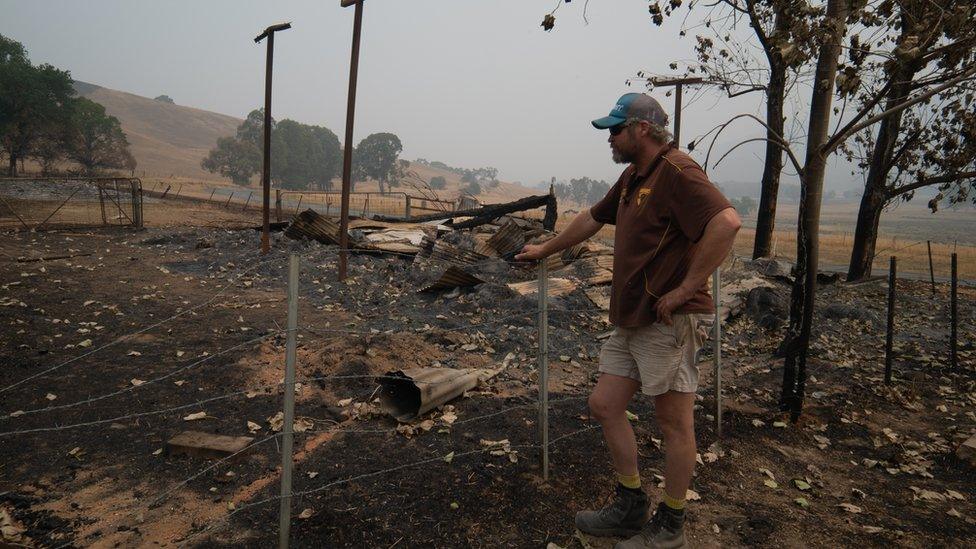
Travis assessing the damage on his farm
Marilyn and Neil Clydsdale are cattle breeders who have 400 breeding stock across their properties near Corryong. They've lost at least 30, including three out of four bulls they raised from birth.
"During the firestorm, one of them ended up on our back porch, absolutely frizzled," Marilyn says,
Neil has only just arrived back at his farm with a truck loaded with round bales. He picks one up with a tractor, and with his grandson and his cattle dog Ned, heads out past dead, bloated cattle laid out in a line.
The tractor ambles up the hill, and stops next to the livestock that survived. Neil walks around and unhooks the bale, which unravels down the hill, and the grateful cattle tuck in.
But he still has to figure out what to do with them.
"We either have to engage in a very heavy feeding regime, sell off the livestock, or locate the livestock somewhere else," he says.
He's a collector of antique farm machinery, and it's this social network that has generated an unexpected lifeline.
A collector friend found them a property owner who wants an overgrown paddock eaten out. They'll pay to truck their remaining livestock down there, but otherwise it's free. It's a tremendous stroke of luck.
But the day isn't done with Neil yet. As he feeds his cows, he notices the large back tire on his tractor is hanging off the rim of the wheel.
It's flat and it's irretrievable. He had a spare in a shed in town. But that burned down and it wasn't insured. It's another A$1,500 (£800; $1,030) expense on a list that just keeps growing.
It's demoralising. An insult on top of injury. Neil looks a little glum, but there's no time to think about it. There's too much work to be done.
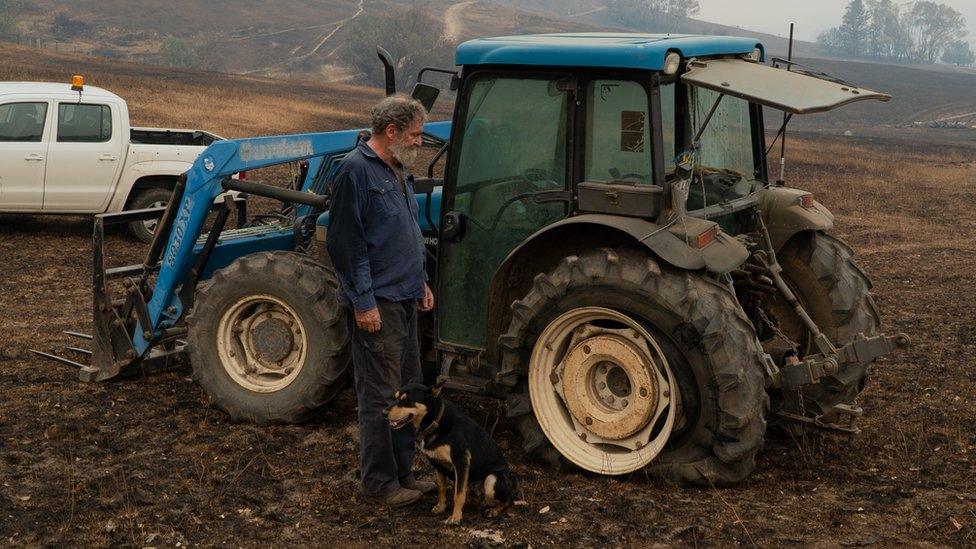
Rob Miller is a dairy farmer on the south coast of New South Wales with about 1,200 acres. He's been hit twice by bushfire over the past few months, and they have burnt out about two-thirds of his land.
"I've never had two fires hit me ever in my life before," he says.
Dairy Farmers Australia, an industry body, says around 70 dairy farms have been hit in this year's fires, including 20-25 each in New South Wales and Victoria, and maybe 12 in South Australia.
Rob thinks he has lost up to 20% of his stock. He's still figuring it out. In some places the stock may have wandered onto a neighbour's property.
Some of his dairy cows were kept cool under sprinklers. But for many others, the heat and the stress have just been too much. Cows that are calving have been affected too.
"We've had four or five abort in the last 48 hours," he says.
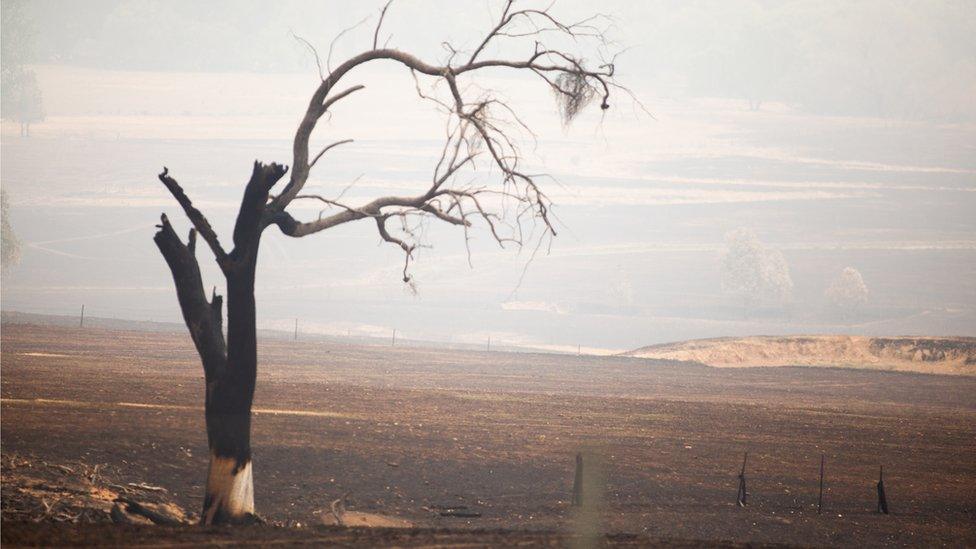
The bushfires have razed both inland and coastal regions across Australia this summer
He'll need to bring in 25 tons of feed a day to feed them all. At the moment, with all the road closures, that's impossible.
The cows have been on ration feeding. He'll have to get rid of many more. He'll export some of his lower quality stock to Japan when he's able.
There will be huge decisions over the coming week about what to do with his stock. He's filled with a sense of dread about the rest of the season.
"I'm on an edge. I know if I take my finger off the pulse, something terrible could happen," he says.
If there's one thing everyone agrees on, it's that there's a desperate need for rain, both to put out the massive fires and to rehabilitate the farms.
Last year was Australia's hottest and driest on record. The tinder dry conditions fuelled the fires. And the recovery is also likely to stretch water resources, because re-growing forests will suck up huge amounts of water.
"Our catchment is diabolically impacted by this," says Helen Haines, the independent MP for Indi, which takes in Corryong, as well as the headwaters of the Murray, Australia's largest river system.
And while cattle farmers have been hit hard, they're certainly not the only agricultural or primary industry that's been affected.
Already, Ms Haines says, wine growers, pine plantations and hop growers have all been hit. She expects the impact will be huge, and it will be national.
After all, the fires stretch from Victoria all the way up to Queensland, and there's almost two months left in the fire season.
The race to save animal casualties injured in Australia's bushfires
Neil Clydsdale is 70. He has worked at the same property since 1984. He thinks many other local farmers will simply give up and do something else. Personally, he's thinking of retiring.
"In terms of financial and emotional stress on people, I think this is going to take a number of years for the community to recover," he says. "It's horrendous."
But not everyone feels the same way. The Attrees are hopeful that with a little luck and a little rain, they'll be restocking by May. Besides, they don't know what they'd do otherwise.
"There's no other choice for us," says Belinda. "We would never choose to leave. This is us."
- Published7 January 2020
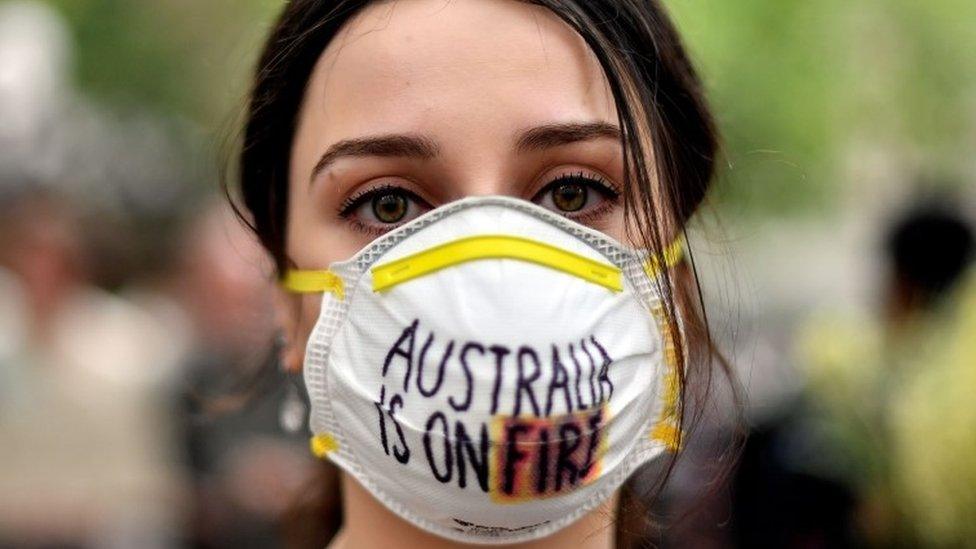
- Published10 January 2020
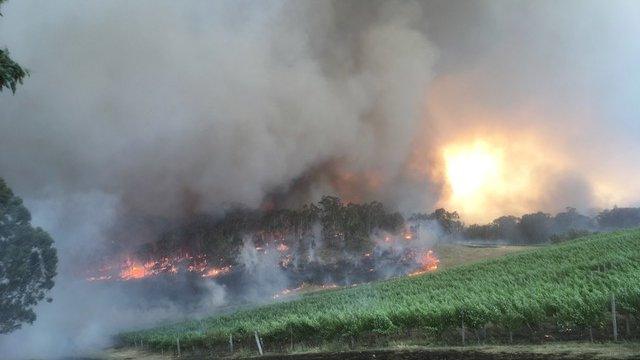
- Published9 January 2020
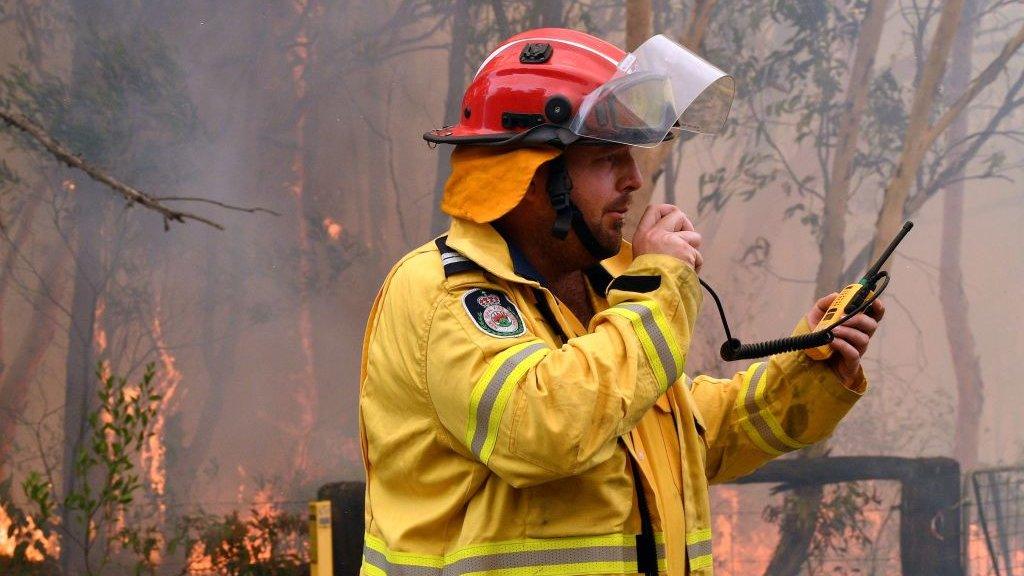
- Published4 January 2020
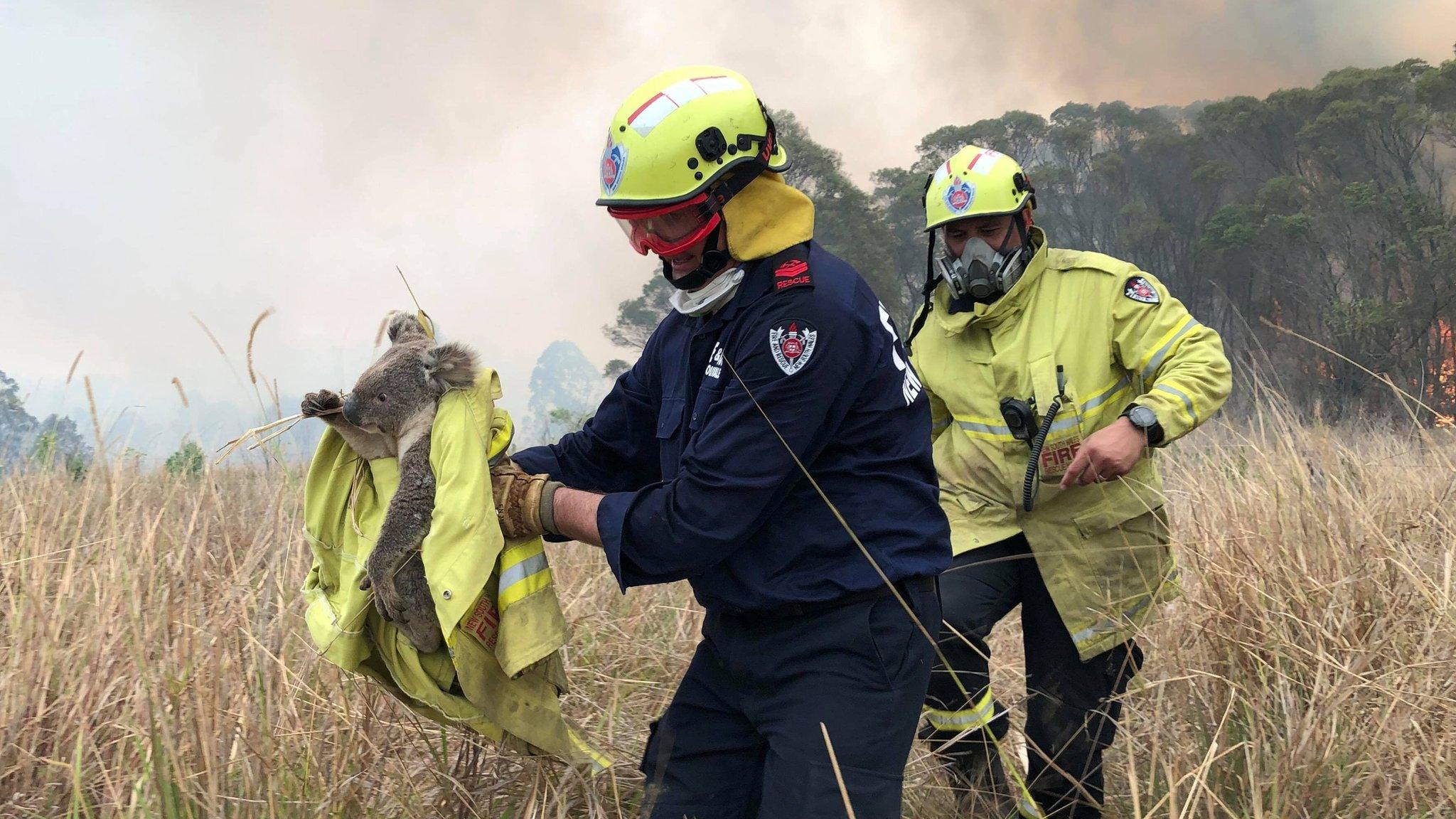
- Published2 January 2020
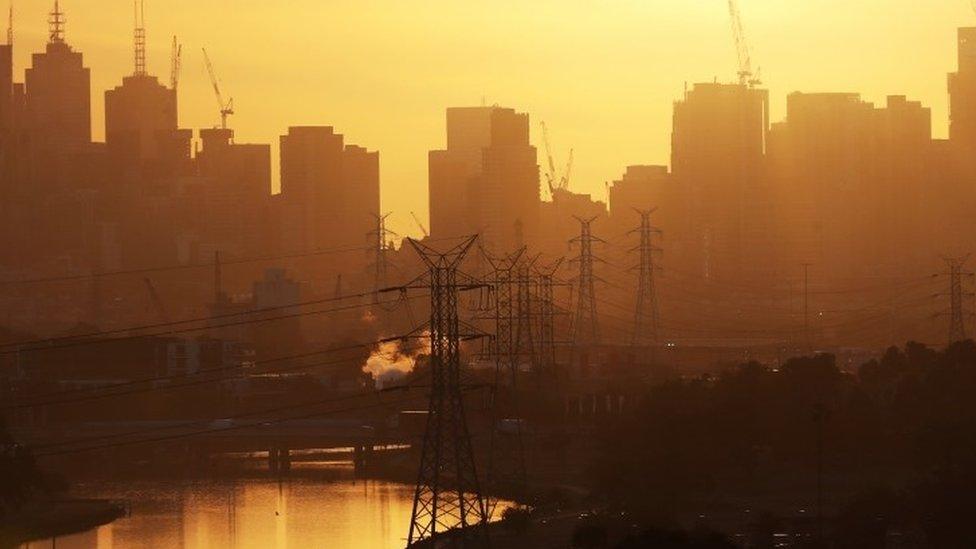
- Published22 November 2019
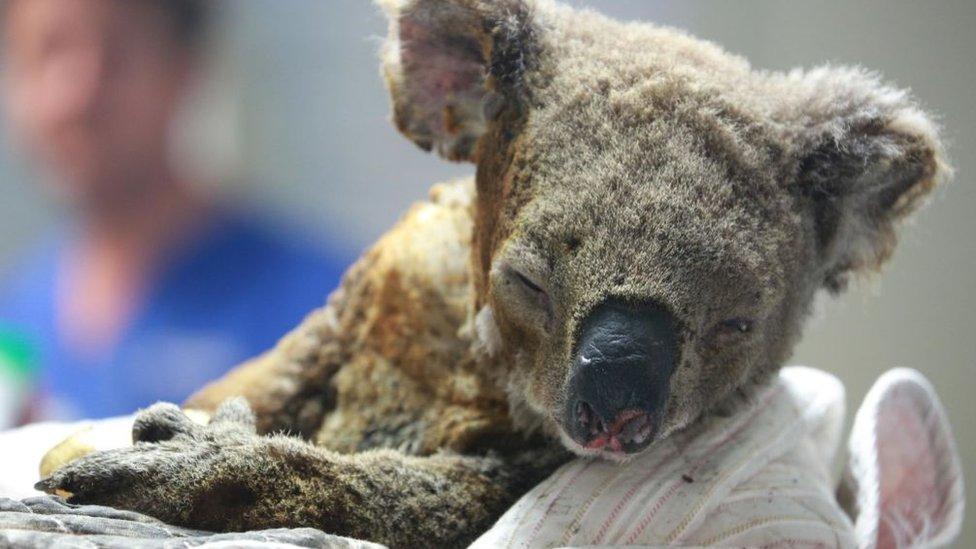
- Published9 August 2018
